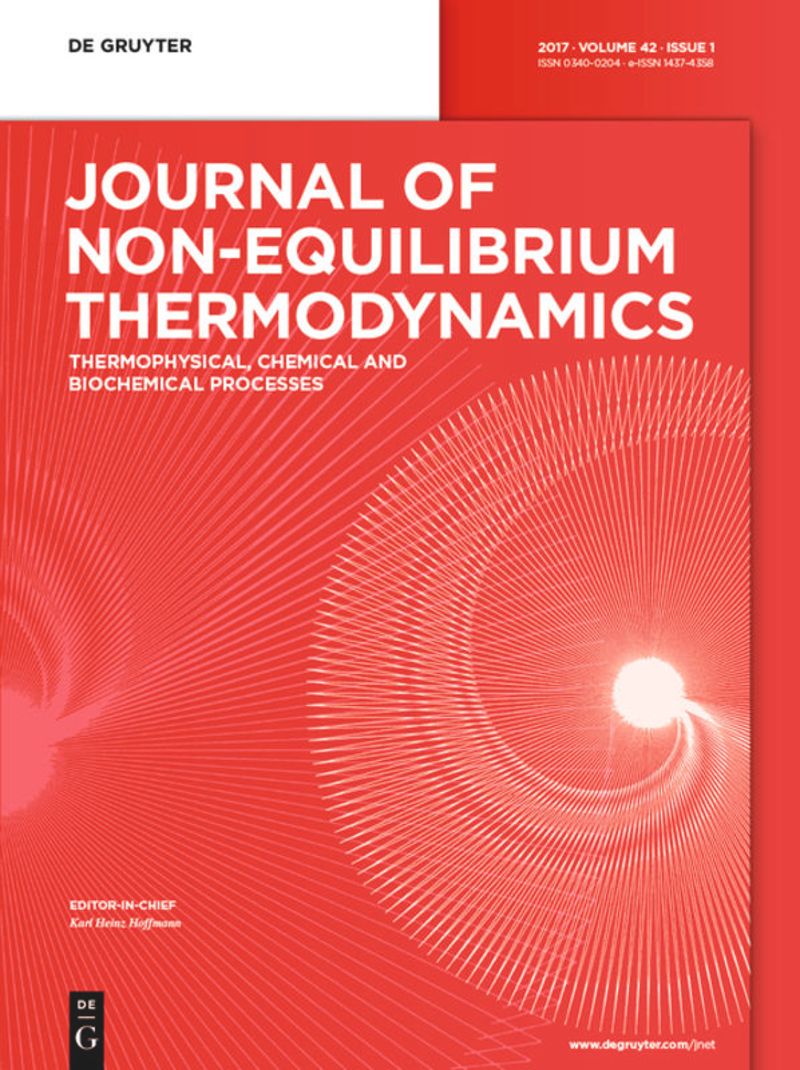基于物理的演化气液界面的稳健计算
IF 4.3
3区 工程技术
Q1 MECHANICS
引用次数: 1
摘要
密度梯度理论通过使总自由能最小化来描述混合物质和纯物质中弥散界面的演化,其中弥散界面由非凸体部分和界面部分组成。体积自由能的最小化导致相分离,同时建立界面自由能(与物种密度梯度的平方成正比),并导致界面的平衡形状。然而,自由能的直接最小化在数值上是不稳定的,并且自由能界面部分的系数通常是根据实验数据估计的(而不是根据基础物理确定的)。在本文中,我们开发了一个强大的基于物理的数值方法,导致纯物质和混合物的界面密度分布。该模型不需要拟合参数,并得到了实验数据的验证。本文章由计算机程序翻译,如有差异,请以英文原文为准。
A Robust Physics-Based Calculation of Evolving Gas–Liquid Interfaces
Abstract Density gradient theory describes the evolution of diffuse interfaces in both mixtures and pure substances by minimization of the total free energy, which consists of a non-convex bulk part and an interfacial part. Minimization of the bulk free energy causes phase separation while building up the interfacial free energy (proportional to the square of gradients of the species’ densities) and it results in the equilibrium shape of the interface. However, direct minimization of the free energy is numerically unstable and the coefficients in the interfacial part of the free energy are often estimated from experimental data (not determined from the underlying physics). In this paper we develop a robust physics-based numerical approach that leads to the interface density profiles for both pure substances and mixtures. The model is free of fitting parameters and validated by available experimental data.
求助全文
通过发布文献求助,成功后即可免费获取论文全文。
去求助
来源期刊
CiteScore
9.10
自引率
18.20%
发文量
31
审稿时长
1 months
期刊介绍:
The Journal of Non-Equilibrium Thermodynamics serves as an international publication organ for new ideas, insights and results on non-equilibrium phenomena in science, engineering and related natural systems. The central aim of the journal is to provide a bridge between science and engineering and to promote scientific exchange on a) newly observed non-equilibrium phenomena, b) analytic or numeric modeling for their interpretation, c) vanguard methods to describe non-equilibrium phenomena.
Contributions should – among others – present novel approaches to analyzing, modeling and optimizing processes of engineering relevance such as transport processes of mass, momentum and energy, separation of fluid phases, reproduction of living cells, or energy conversion. The journal is particularly interested in contributions which add to the basic understanding of non-equilibrium phenomena in science and engineering, with systems of interest ranging from the macro- to the nano-level.
The Journal of Non-Equilibrium Thermodynamics has recently expanded its scope to place new emphasis on theoretical and experimental investigations of non-equilibrium phenomena in thermophysical, chemical, biochemical and abstract model systems of engineering relevance. We are therefore pleased to invite submissions which present newly observed non-equilibrium phenomena, analytic or fuzzy models for their interpretation, or new methods for their description.

 求助内容:
求助内容: 应助结果提醒方式:
应助结果提醒方式:


